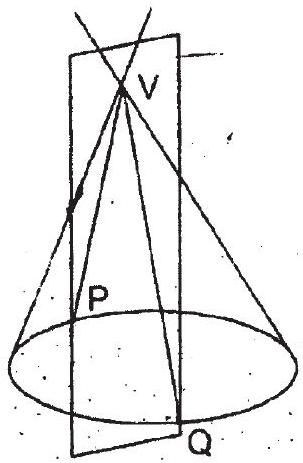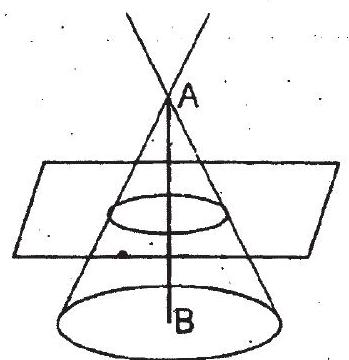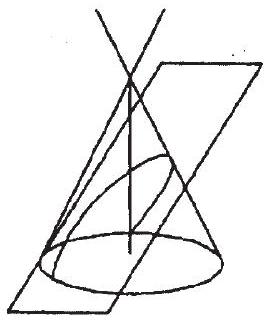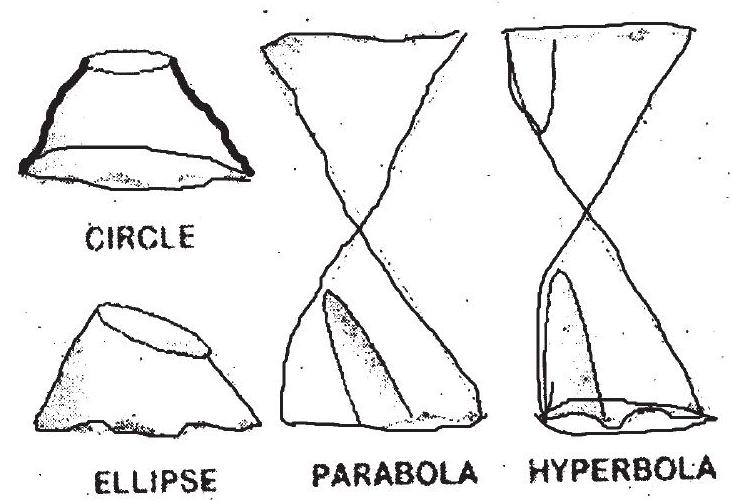PARABOLA-1 (Conic Section)
A conic section or conic is the locus of a point

-
The fixed point known as Focus.
-
The fixed straight line is known as Directrix,
-
The constant ratio is called the Eccentricity denoted by e.
-
The line passing through the focus and perpendicular to the directrix is known as axis.
-
A point of intersection of a conic with its axis is called a vertex.
-
The point which bisects every chord of the conic passing through it, is called the centre of the coni(c).
-
The chord passing through the focus and perpendicular to the axis is known as LatusRectum.
General equation of a conic section:
Let coordinates of focus be
Thus locus of
This is equation of conic section which, when simplified, can be written in the form
Section of right circular cone by different planes
A right circular cone is as shown in the figure -1

i. Section of a right cone by a plane passing through its vertex is a pair of straight lines passing through the vertex as shown in the figure -2 .

ii. Section of a right circular cone by a plane parallel to its base is a circle as shown in the figure -3 .

iii. Section of a right circular cone by a plane parallel to a generator of the cone is parabola as shown in the figure -4 .

iv. Section of a right circular cone by a plane neither parallel to any generator of the cone nor perpendicular or parallel to the axis of the cone is an ellipse as shown in the figure -5 .

v. Section of a right circular cone by a plane parallel to the axis of the cone is a hyperbola as shown in the figure -6 .
3D View :

Itinguishing various conics:
The nature of the conic section depends upon the position of the focus with respect to the directrix and also upon the value of the eccentricity.
1. If focus lies on the Directrix.
General equation of a conic represents a pair of straight lines, if
2. If focus does not lie on Directrix.
i.
ii.
iii.
iv.
Example: 1 If
(a).
(b).
(c).
(d). none of these
Show Answer
Solution:
and
Practice questions
1. The locus of a point, which moves such that its distance from the point
(a).
(b).
(c).
(d). none of these
Show Answer
Answer: (b)2. The equation
(a). a circle
(b). pair of straight lines
(c). a parabola
(d). an ellipse
Show Answer
Answer: (c)3. The equation
(a). a circle
(b). a parabola
(c). a hyperbola
(d). an ellipse
Show Answer
Answer: (d)4. If the conic
(a).
(b).
(c).
(d).










